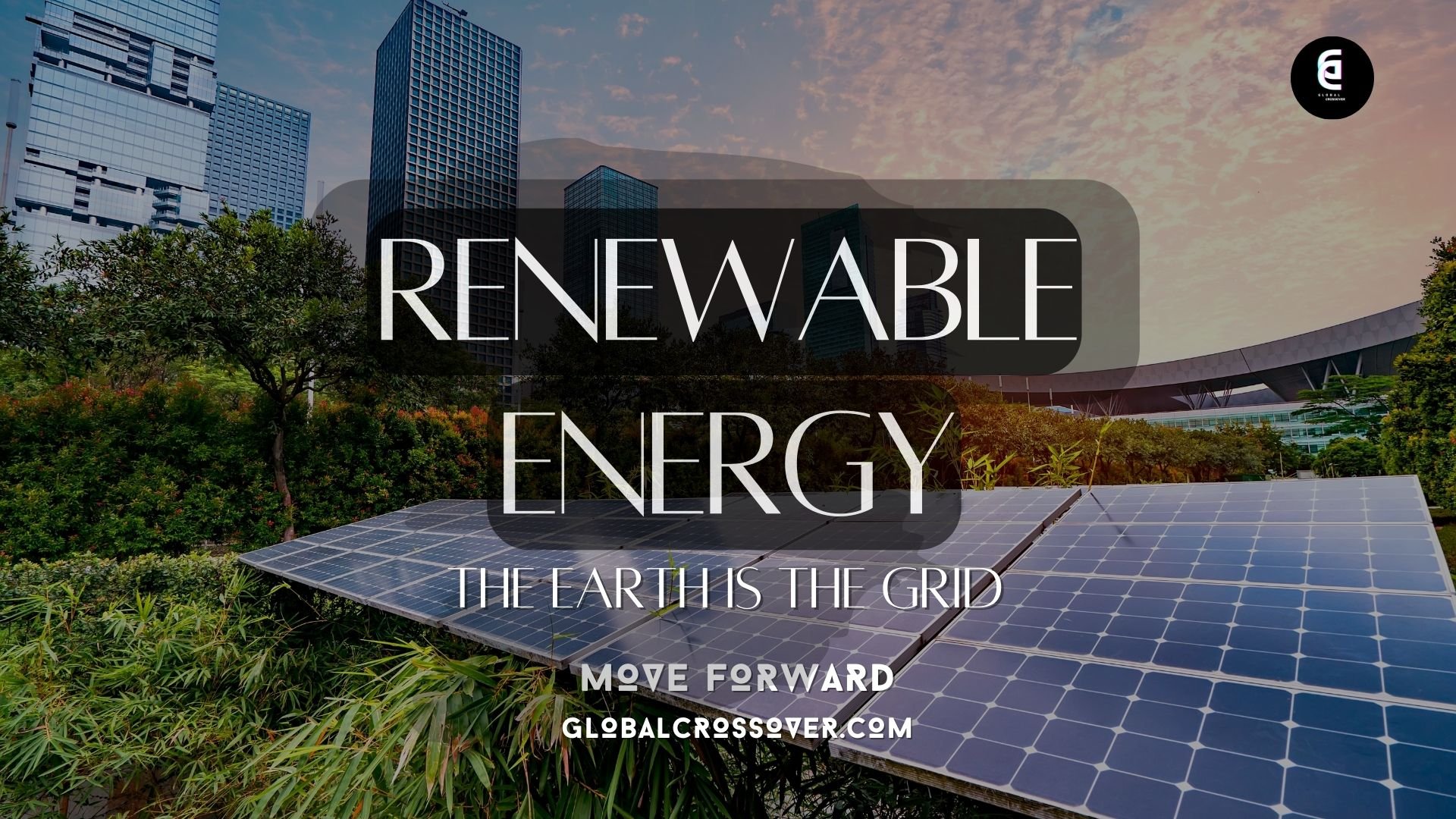What Is Renewable Energy? What Are The Different Types Of Renewable Energy? And What Are Their Benefits?
Renewable energy refers to energy sources that are naturally replenished and have a minimal impact on the environment. These energy sources are derived from natural processes, such as sunlight, wind, water, and geothermal heat.
What’s The Big Deal?
Unlike non-renewable energy sources like fossil fuels, renewable energy is sustainable, abundant, and emits fewer greenhouse gases. In this article, I will try to provide an overview of different types of renewable energy, along with examples, and discuss their benefits.
Solar Energy:
Solar energy is derived from the radiation of the sun and is harnessed through technologies such as photovoltaic (PV) panels and solar thermal systems. PV panels convert sunlight directly into electricity, while solar thermal systems use the sun's heat to generate power or heat water. Solar energy is widely used for residential, commercial, and industrial applications.
Wind Energy:
Wind energy is generated by converting the kinetic energy of wind into electrical energy using wind turbines. These turbines capture wind power and convert it into electricity through a rotor, generator, and transmission system. Wind farms and individual wind turbines are used to harness wind energy, which is a rapidly growing source of renewable power.
Hydropower:
Hydropower utilizes the energy of flowing or falling water to generate electricity. It is produced by capturing the kinetic energy of water through turbines in dams, rivers, or tidal systems. Large-scale hydropower plants and smaller run-of-river installations are examples of harnessing the power of water to generate clean and sustainable energy.
Geothermal Energy:
Geothermal energy is derived from the heat within the Earth. It involves tapping into hot water or steam reservoirs underground and using it to generate electricity or heat. Geothermal power plants utilize this energy by drilling wells into geothermal reservoirs and converting the heat into electricity.
Biomass Energy:
Biomass energy is generated from organic matter, such as wood, crop residues, or dedicated energy crops. It can be used directly as heat or converted into biofuels, biogas, or liquid biofuels for power generation and transportation. Biomass energy is a flexible and renewable source that reduces waste and greenhouse gas emissions.
How Can Renewable Energy Benefit Us?
The fact that it will save you tons of money and you might even earn money just because you have it, besides that there are many other clear benefits of Renewable Energy:
Environmental Sustainability: Renewable energy sources produce minimal or no greenhouse gas emissions, reducing air pollution.
Energy Security: Diversifying energy sources with renewables reduces dependence on fossil fuel imports and improves energy independence.
Economic Growth: The renewable energy sector stimulates job creation, attracts investments, and supports local economies.
Cost Competitiveness: As technology advances, renewable energy costs are declining, making it increasingly competitive with traditional energy sources.
Resource Abundance: Renewable energy sources are naturally replenished, ensuring a virtually unlimited supply of energy.
Renewable energy plays a crucial role in mitigating the harmful effects of fossil fuels, reducing pollution, and ensuring a sustainable energy future. Solar, wind, hydropower, geothermal, and biomass energy offer diverse solutions for clean and reliable power generation. Embracing renewable energy sources not only brings environmental benefits but also fosters economic growth, energy security, and a resilient energy infrastructure.
What Are The Benefits For People To Switch To Renewable Energy In Their Homes? What Are Some Of The Cost-Saving Estimates For A Medium To Large Family?
Switching to renewable energy in homes offers several benefits for people, including cost savings, environmental impact reduction, and energy independence. Let's explore these benefits with real-life examples and estimated cost savings for a medium to large family.
Cost Savings:
By installing renewable energy systems, homeowners can reduce their electricity bills significantly. Here are a few examples:
a. Solar Panels: Installing solar panels on the roof can generate electricity and reduce reliance on the grid. The cost of installing a solar system varies based on factors like location, system size, and available incentives. On average, a medium to large family can save around $600 to $1,200 per year on electricity bills, resulting in long-term savings of $15,000 to $30,000 over the system's lifespan.
b. Wind Turbines: If the property has sufficient space and wind resources, a wind turbine can be an option for generating electricity. The cost and potential savings depend on the size and wind conditions. However, wind turbines are typically more suitable for rural or remote areas due to zoning and space requirements.
Environmental Impact Reduction:
Switching to renewable energy sources at home helps reduce carbon emissions. Here are a few examples:
a. Solar Water Heaters: Installing a solar water heating system can significantly reduce the use of fossil fuels or electricity for heating water. It can save around 1,400 pounds of CO2 emissions per year, equivalent to planting about 38 trees annually.
b. Geothermal Heat Pumps: Geothermal systems use the stable temperature of the ground to heat or cool homes. They reduce carbon emissions and can save around 3,000 pounds of CO2 emissions annually compared to conventional heating and cooling systems.
Energy Independence:
Generating renewable energy at home provides a degree of energy independence and resilience. Here's an example:
a. Off-Grid Solar Systems: Installing an off-grid solar system with battery storage allows homeowners to become self-sufficient in terms of electricity. This setup is particularly useful in remote areas without access to the grid. While the upfront costs can be higher, it provides long-term energy independence and reliability.
It's important to note that the estimated cost savings can vary based on factors like location, energy consumption, system size, available incentives, and local electricity rates. Conducting a detailed analysis and consulting with renewable energy providers will provide a more accurate assessment of potential savings for a specific medium to large family.
Overall, transitioning to renewable energy sources in homes not only helps families save on energy costs but also contributes to a cleaner environment and a more sustainable future.
What Are The Hurdles For People To Switch To Renewable Energy Instead Of Depending On A Pole Based Overhead Power Grid?
While there are numerous benefits to switching to renewable energy, there are also several hurdles that people may encounter when considering a transition from the electric and gas grid. Here are some common challenges:
High upfront costs: The initial investment required for renewable energy systems, such as solar panels or wind turbines, can be a significant barrier for many households. Although the long-term cost savings are often substantial, the upfront expenses can deter some people from making the switch.
Availability and access: Renewable energy resources, such as solar or wind, may not be equally accessible to all regions. The availability of sunlight, wind speed, or suitable sites for installations can limit the feasibility of certain renewable energy options, particularly in urban areas or regions with specific geographic or environmental constraints.
Technology limitations: Some renewable energy technologies are still in the early stages of development, and their efficiency or reliability may not be on par with traditional energy sources. This can lead to concerns about the consistency of power supply and the ability to meet energy demands reliably.
Intermittency and storage: Certain renewable energy sources, like solar and wind, are intermittent in nature. They generate power based on weather conditions, which can result in fluctuations in energy production. The need for energy storage systems to store excess energy for use during low-generation periods adds complexity and cost to the transition.
Grid integration challenges: Integrating renewable energy into existing electric grids can be challenging due to differences in infrastructure and grid management. Upgrades may be required to accommodate the variability of renewable energy sources and ensure grid stability and reliability.
Lack of information and awareness: Many people may not have sufficient knowledge or awareness about renewable energy options, their benefits, and the available incentives. Limited access to accurate information can hinder decision-making and prevent individuals from fully understanding the potential advantages of switching to renewable energy.
Policy and regulatory barriers: In some cases, regulatory frameworks or policies may not be conducive to the widespread adoption of renewable energy. Complex permitting processes, lack of supportive policies, or limited financial incentives can create barriers and slow down the transition to renewable energy.
Addressing these hurdles requires a combination of efforts, including government support through incentives and favorable policies, increased research and development in renewable energy technologies, improved public awareness and education, and collaboration between stakeholders to enhance grid integration and reliability.
Despite these challenges, the growing recognition of the urgency to address our energy needs and the decreasing costs of renewable energy technologies are gradually reducing barriers and making the transition to renewable energy more feasible and attractive for individuals and communities.
Considering The Different Kinds Of Renewable Energy Available For Us To Use Which Is The Best One For Homes And Families?
The best renewable energy form for homes and families to use depends on various factors, including location, available resources, energy needs, and budget. Each renewable energy source has its advantages and considerations. However, solar energy is often considered the most accessible and widely adopted choice for residential applications. Here's why:
Solar Energy:
Solar energy has several benefits that make it suitable for homes and families:
Abundance: Solar energy is available in most regions to some extent, as long as there is sunlight. Even areas with moderate sun exposure can generate a significant amount of electricity.
Scalability: Solar systems can be tailored to fit different energy needs, whether it's a small installation for a single-family home or a larger array for a larger household or increased energy demand.
Rooftop Potential: Solar panels can be installed on rooftops, which maximizes space utilization and minimizes land requirements. It is particularly advantageous for urban or suburban areas where ground space is limited.
Cost-effectiveness: The cost of solar panels has significantly reduced over the years, making them more affordable for homeowners. Additionally, various financial incentives, such as tax credits and net metering programs, further improve the cost-effectiveness of solar installations.
Maintenance: Solar panels require minimal maintenance and have a long lifespan. Routine cleaning and occasional inspections are typically sufficient to keep the system operating optimally.
While solar energy is a popular choice, other renewable energy forms may be viable depending on specific circumstances. For instance, if a property has ample space and consistent wind resources, wind turbines can be a viable option. Similarly, geothermal systems can be suitable in regions with accessible geothermal heat sources.
To determine the best renewable energy form for a specific home or family, it is recommended to conduct a thorough assessment that considers factors like energy needs, available resources, local regulations, and financial considerations. Consulting with renewable energy experts or installers can provide personalized recommendations based on individual circumstances.
| Imran Siddiqui is the managing editor at Justice News and the author of The JBlog. Imran's podcast FairPlay Challenging Wrongful Convictions airs on J107Justice Radio





